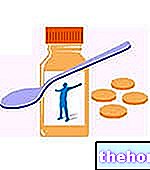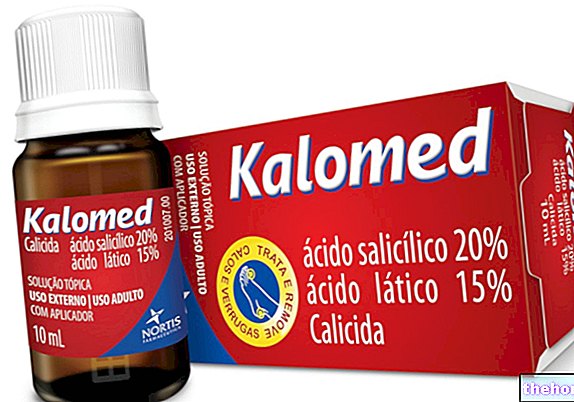Sympatholytic drugs act as antagonists for the sympathetic system receptors: they bind to the active site of the receptor preventing it from interacting with the adrenergic neurotransmitter. Some act as partial antagonists, when the concentration of the neurotransmitter is high enough or when the concentration of the endogenous agonist (which in this case acts as a partial agonist) is low.
Depending on their chemical nature and affinity with receptors, α and β blockers are distinguished.
Alpha-blocking drugs
- The α blockers they act as selective and non-selective antagonists for the α receptors of the sympathetic system.
Phenoxybenzamine is a non-selective α blocker, that is, it binds irreversibly to the α1 and α2 receptors; it is used for the therapy of pheochromocytoma.
Phentolamine is also a non-selective α blocker, but its blocking action is competitive.
Prazosin is a selective α1 blocker, used for the pharmacological treatment of hypertension, as it induces vasodilation and reduction of peripheral resistance.
The possible adverse reactions due to the intake of α-blocking drugs are: orthostatic hypotension, due to blocking of the α1 receptors in the venous vessels; reflex tachycardia, as the reduced blood pressure signaled by the baroreceptors induces a compensatory increase in cardiac activity; dizziness and disturbances in sexual function due to inadequate blood supply.
See also α-blocking drugs in the treatment of benign prostatic hypertrophy: Terazosin, Doxazosin. Tamsulosin
Beta-blocking drugs
- THE β blockers they act as selective antagonists for the β-receptors of the sympathetic system, while maintaining stable the potential of the receptor membrane. They are distinguished by the different pharmacokinetics: fat solubility, method of administration and intake. The β adrenergic receptors are quite ubiquitous in the organism:
β1 are found at the level of the eyes, where they induce the secretion of aqueous humor, of the kidneys where they induce an increase in the concentration of renin and in conclusion of angiotensin, and of the heart where they induce an increase in the speed of conduction of the impulse from the atria to the ventricles, thus stimulating automatism and cardiac contraction;
β2 are found in the bronchi, where they induce bronchodilation, in the skeletal muscles where they induce vasodilation of arterial vessels, and in the liver where they stimulate glycogenolysis;
β3 act at the metabolic level, stimulating lipolysis.
The main activities of selective β1 blockers, or the activities used for therapeutic purposes, are: the reduction of heart rate and contractility, the conduction of the atrio-ventricular impulse, the reduction of renin secretion in the kidney and the reduction of secretion of aqueous humor at the ocular level.
Selective β-blockers can be administered with more safety and have no serious adverse effects, while non-selective β-blockers have a serious side effect, bronchoconstriction due to β 2 receptor blockade.
The pharmacokinetics of beta-blockers are diverse; they have: a partial competitive activity (useful in case of bronchial asthma because it causes a weak relaxation of the bronchial smooth muscles); a "local anesthetic activity, but only by some and only at very high and non-therapeutic doses; a different liposolubility from drug to drug; the half-life should be as high as possible, so as to guarantee a" longer lasting action; the bioavailability of the drug varies according to the sum of all the variables listed above.
The therapeutic uses of these drugs concern: the cardiovascular action, enhanced in the case of fat-soluble drugs that are able to overcome the BEE and act centrally; the vasodilating action on the skeletal muscles for the production of prostacyclin; the anti-hypertensive effect by inhibiting the release of renin and reducing heart rate; the hypotensive action in the eye and reducing aqueous humor for the therapy of open-angle glaucoma; the vasodilating effect of coronary arteries with consequent reduction cardiac activity for the therapy of Angina Pectoris and for the prevention of myocardial infarction by predisposed individuals or those who have already had heart attacks; for the treatment of hypertension, hyperthyroidism and migraines.
The adverse effects concern the same apparatuses and systems involved in the therapeutic action: cardiac arrhythmias due to an "up regulation" of the β1 receptors: since their action is blocked, the cells synthesize new ones; this high presence of receptors can cause severe side effects when therapy is stopped, hence the need for gradual discontinuation; bronchoconstriction due to inhibition of β2 receptors; CNS disorders that affect concentration, sleep-wake rhythms, and predispose to depression.
Other articles on "Sympatholytic Drugs"
- Tyramine - pharmacology
- REM sleep, non-REM sleep and insomnia




























